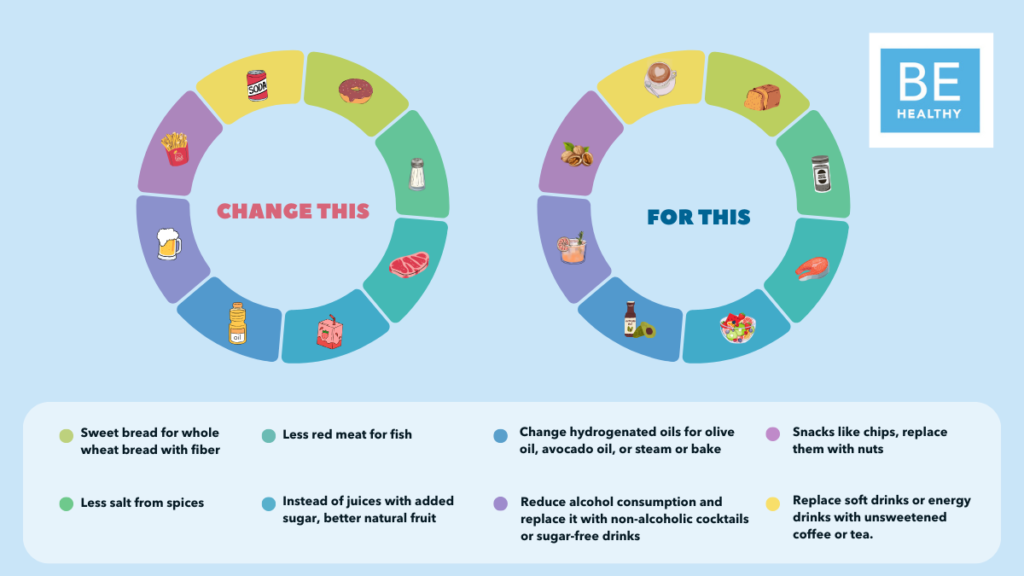8 tips for eating healthy while living with diabetes
Eating healthy requires effort, that’s why we share 8 food tips to help start leading a healthier life and be able to control blood sugar levels.

- Choose between good and bad carbohydrates, to better take care of blood glucose levels. Instead of sweet bread, white bread, and processed cereals, swap them for whole-grain and high-fiber bread, oats, brown rice, lentils, chickpeas, natural yogurt, and unsweetened plant-based milk.
- Reduce the consumption of salt in your foods, high salt consumption increases the risk of heart disease and stroke, which is why it is important to review the ingredients of the foods we choose if they are already pre-packaged. By cooking the food ourselves from the beginning, we can control the amount of salt we consume or, instead of using salt, change it with natural spices such as pepper, garlic, onion, oregano, thyme, coriander and cumin, among others.
- Reducing the consumption of red meat will help reduce blood glucose levels; high consumption of red meat and sausages is associated with heart disease and cancer. We can replace them with eggs, chicken, turkey, beans and peas. Fish such as salmon is also a good substitute for meat, since it is healthy and rich in omega 3 that protects our heart from possible diseases. Add 2 pieces of oily fish per week to your meals.
- Eating more fruits and vegetables will help us obtain more vitamins, minerals and fiber that the body needs to be healthy. Consuming them at mealtime or as a snack is a good option. We may think that with diabetes we should avoid fruit because it contains sugar, but in reality it is good for everyone because it is natural sugar, not like cookies, cakes, bread or fruit juices that have added sugar. Change them for natural and whole fruit, you can eat them frozen, fresh or canned as long as they do not contain added sugar on their labels.
- Choosing healthy fats is important in our diet because it helps us have energy, but it is important to choose which ones to consume that do not affect our health, since certain fats increase the level of cholesterol in the blood. Change cooking oil, lard, butter and margarine for olive oil, avocado oil, steam cooking, oven and fryer.
- Gradually reducing alcohol consumption, reducing alcohol consumption as well as sugar can also be difficult at first. Start by lowering the dose you consume per week and per month so that it becomes less difficult over time.
- Choose your snacks, instead of eating some chips, cookies or chocolates, you can change them for seeds, nuts, almonds and natural yogurt. This will help you control your glucose levels.
- Avoid drinks with added sugar such as soda, energy drinks and juices. Eliminating sugary drinks may be difficult at first, but it is possible to change them little by little for tea, natural water, coffee, natural lemon water or hibiscus water. You can sweeten these by choosing to add a little stevia or monk fruit.
Very important, don’t forget to implement physical activity with these tips, try to do at least 15 minutes of exercise a day 5 times a week. This will help reduce the risk of heart disease and control diabetes.
Having a meal plan will help you eat the right amounts for you, consult a nutrition specialist for better guidance.
If you need to coordinate an appointment with a nutritionist, contact us: info@sainmedical.com or at +52-653-536-7800.
Source: diabetes.org






